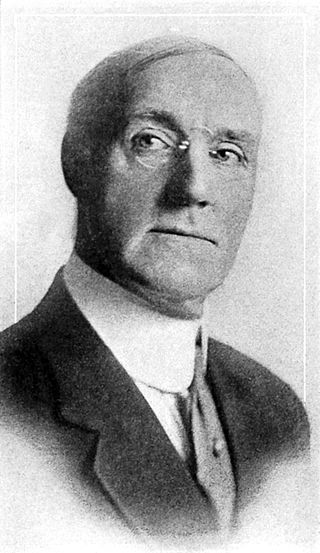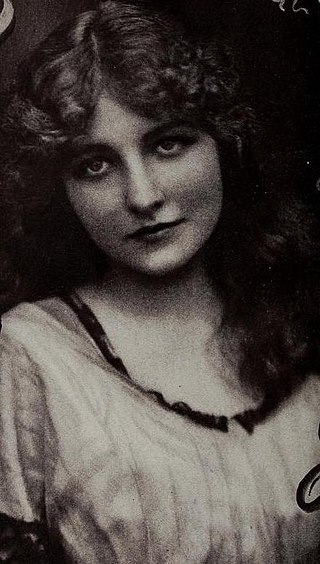
Wild and Woolly is a 1917 American silent Western comedy film which tells the story of one man's personal odyssey from cowboy-obsessed Easterner to Western tough guy. It stars Douglas Fairbanks, Eileen Percy, Walter Bytell and Sam De Grasse. The film was adapted by Anita Loos from a story by Horace B. Carpenter and was directed by John Emerson.

Essanay Studios, officially the Essanay Film Manufacturing Company, was an early American motion picture studio. The studio was founded in 1907 in Chicago by George Kirke Spoor and Gilbert M. Anderson, originally as the Peerless Film Manufacturing Company, then as Essanay on August 10, 1907. Essanay is probably best known today for its series of Charlie Chaplin comedies produced in 1915-1916. In late 1916, it merged distribution with other studios and stopped issuing films in the fall of 1918. According to film historian Steve Massa, Essanay is one of the important early studios, with comedies as a particular strength. Founders Spoor and Anderson were subsequently awarded special Academy Awards for pioneering contributions to film.

The Selig Polyscope Company was an American motion picture company that was founded in 1896 by William Selig in Chicago, Illinois. The company produced hundreds of early, widely distributed commercial moving pictures, including the first films starring Tom Mix, Harold Lloyd, Colleen Moore, and Roscoe "Fatty" Arbuckle. Selig Polyscope also established Southern California's first permanent movie studio, in the historic Edendale district of Los Angeles.

Triple Trouble is a two-reel American silent comedy film that was released in 1918. It stars Charlie Chaplin, Edna Purviance, and Leo White. This film was not an official Chaplin film, even though it has many Chaplin-directed scenes; after he left the studio, Essanay edited it together using outtakes and newly shot footage directed by White. It had already been established in court that Chaplin had no legal control over the films made during his time with Essanay and could not prevent its release. In his 1967 autobiography, Chaplin included "Triple Trouble" in his filmography.

Beverly Bayne was an American actress who appeared in silent films beginning in 1910 in Chicago, Illinois, where she worked for Essanay Studios.

Ruth Stonehouse was an actress and film director during the silent film era. Her stage career started at the age of eight as a dancer in Arizona shows.

Thomas B. Ricketts was an English-born American stage and film actor and director who was a pioneer in the film industry. He portrayed Ebenezer Scrooge in the first American film adaptation of A Christmas Carol (1908), and directed one of the first motion pictures ever made in Hollywood. After directing scores of silent films, including the first film to be released by Universal Pictures, Ricketts became a prominent character actor.

Barney Oldfield's Race for a Life is a 1913 silent comedy short, directed and produced by Mack Sennett. It stars Sennett, Mabel Normand, Ford Sterling, The Keystone Cops and Barney Oldfield as himself, in his film debut. It was distributed by the Keystone Film Company, and released in the United States on June 3, 1913. The film is preserved and was released as part of a DVD box set, titled Slapstick Encyclopedia, and is frequently featured in silent film festivals.
Archer MacMackin was an American silent film director, producer, and screenwriter. McMackin directed over seventy-three films between 1912 and 1916 directing films such as When Empty Hearts Are Filled and The Altar of Ambition in 1915 working with actors such as Harry von Meter, Louise Lester, Vivian Rich and David Lythgoe. His career reached its height in 1916 where in that year alone he directed thirty short films.

His New Job is a 1915 American short silent comedy film written by, directed by, and starring Charlie Chaplin. Gloria Swanson appears as an uncredited extra. The title is an inside reference to this being Chaplin's first film after leaving Keystone Studios for Essanay Studios. It was also the only film Chaplin shot at Essanay's Chicago studio. He found the facilities and climate not to his liking, and Chaplin soon relocated back to California.
A Christmas Carol is a 1908 silent film produced by Essanay Studios in Chicago, and the first American film adaptation of Charles Dickens' famous 1843 novella of the same name. Tom Ricketts stars as Ebenezer Scrooge in the film, which is considered lost.

Elisha Helm Calvert was an American film actor and director. He appeared in more than 170 films, as well as directing a further 60 titles.

Dolores Cassinelli was an American film actress and singer. She appeared in 69 films between 1911 and 1925.
The Honor of the Family is a 1912 American silent short drama film produced by the Rex Motion Picture Company. The film is a melodramatic one between two brothers and a woman named Marja. Gerald admires the girl and warns his visiting brother, Claude, to leave her alone. Infatuated, Claude and Marja secretly marry before Claude returns to England with a promise to return for her. As the months pass, Marja becomes broken-hearted and attempts suicide, but ends up crippled for life. Claude dies and Gerald cares for Marja, even forging a letter to keep her spirits up. Marja comes to love Gerald and all is revealed on a later date.
Across the Plains is a 1911 American silent Western film directed by Broncho Billy Anderson and Thomas H. Ince and starring Anderson.

Don't Call Me Little Girl is a 1921 American silent comedy film directed by Joseph Henabery and starring Mary Miles Minter. It was adapted by Edith Kennedy from the stage play "Jerry" by Catherine Chisholm Cushing. As with many of Minter's features, it is thought to be a lost film.

Alfred Emory Johnson was an American actor, director, producer, and writer. As a teenager, he started acting in silent films. Early in his career, Carl Laemmle chose Emory to become a Universal Studio leading man. He also became part of one of the early Hollywood celebrity marriages when he wed Ella Hall.
When Soul Meets Soul is a 1913 silent film romantic fantasy short directed by Norman MacDonald and produced by the Essanay Studios out of Chicago. It starred Francis X. Bushman and Dolores Cassinelli. It was produced by the Essanay Studios and distributed by the General Film Company.

Isabel Lamon, also billed as Isabel Baring, was an American actress in silent films. Among many roles, she played Meg March in the second filmed adaptation of Louisa May Alcott's Little Women.

Lillian Drew, born Lillian Margaret Flannery, was an American actress during the silent film era.





















